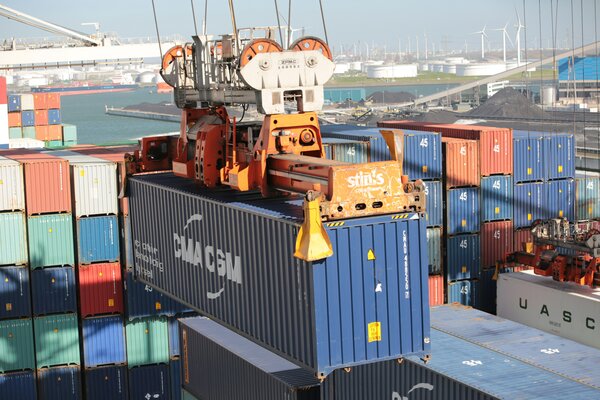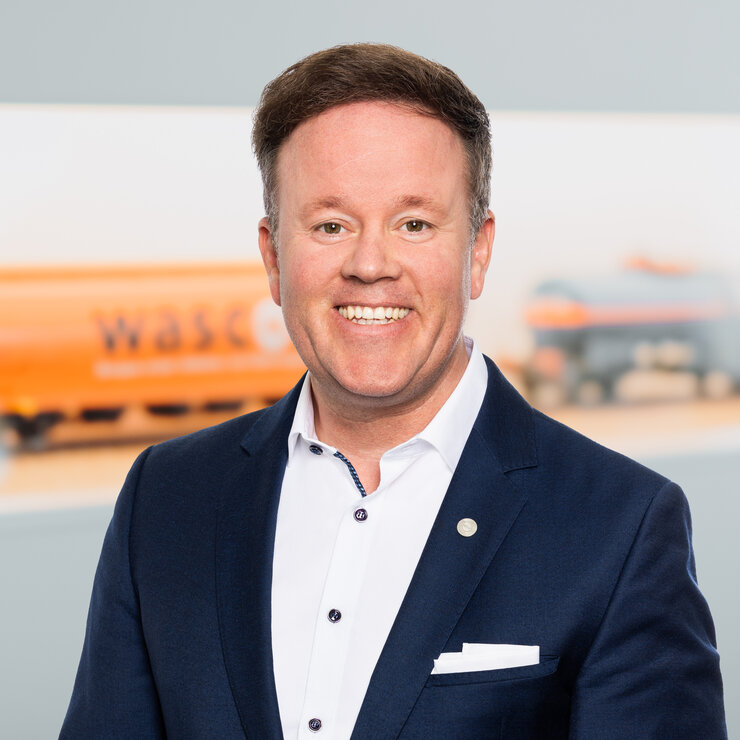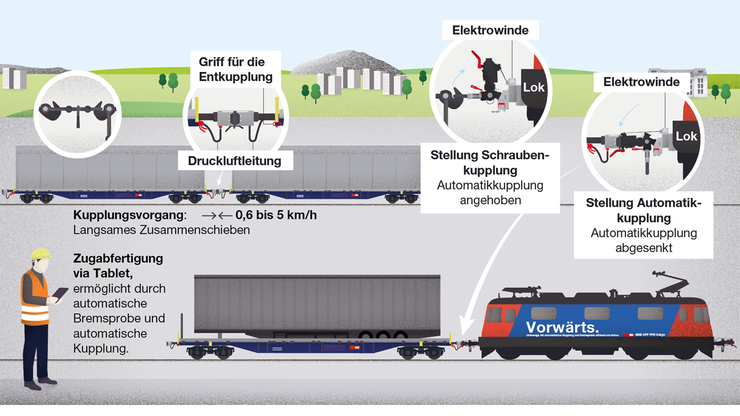
Intermodal transport: opportunities, challenges and future prospects
In a virtual roundtable discussion, Gilbert Bal, Business Manager at the Port of Rotterdam, Don van Riel, Managing Director of Trimodal Europe BV, Karl Schauer, Transport Director at LKW Walter, and Pieralberto Vecchi, CEO of Ambrogio Intermodal, discussed the future of intermodal transport. We have summarised the most important points for you below. The full interview can be found in Wascosa Infoletter No. 41.
What is intermodal freight transport?
Intermodal freight transport refers to the combined transport of goods via different modes of transport, primarily rail and road. The aim is to make optimum use of the respective advantages: the flexibility of road transport and the environmental friendliness and high transport capacity of rail.
Current situation of intermodal freight transport: between decline and reorientation
In 2023, intermodal freight transport experienced a significant decline across Europe. The main causes were high energy costs, inflation and structural problems such as closed tunnels and bottlenecks at terminals. Nevertheless, industry representatives see the current developments not only as a crisis, but also as an opportunity for a fundamental realignment.
Economic requirements for intermodal transport
Rising energy prices and cuts in government subsidies are putting rail freight transport under severe competitive pressure. There is intense price competition, particularly on the north-south corridor, which means that additional costs often cannot be passed on to customers. For operators, this means that they have to use their trains as efficiently as possible. As Pieralberto Vecchi explains: ‘If a train is not operating at more than 95% capacity, it is a loss-making business.’
Key challenges in intermodal freight transport
Infrastructure and terminal bottlenecks are currently one of the biggest challenges: lack of storage space, long waiting times and construction works such as on the Betuwe Route rail freight link are significantly limiting available capacity. In addition, different train lengths and regulations in individual countries make efficient handling difficult. The situation is exacerbated by high staffing requirements, as both train drivers and qualified technical staff are in short supply and have a constraining effect.
Climate targets as growth drivers
The reduction of CO₂ emissions is a key argument in favour of intermodal transport. Experts believe that environmental considerations will become a decisive competitive advantage in the coming years. In the words of Karl Schauer: "We are seeing that customers are increasingly concerned with this issue. We are also issuing more emission certificates for companies. However, greater customer awareness is not yet leading to them paying more for rail transport. We do not expect this effect to occur until in one to two years' time, when the issue has gained further momentum." Gilbert Bal adds: ‘Larger companies in particular, such as IKEA, are already trying to reduce their CO2 emissions because they know they cannot wait until the CSRD guidelines come into force in 2025.’ Smaller companies, on the other hand, often still lack the knowledge and experience in dealing with rail transport. Experts see considerable potential here for raising awareness.
Future prospects and solutions for intermodal transport
Despite the current difficulties, experts see considerable growth opportunities. A key starting point for the future of intermodal transport lies in targeted investments in infrastructure. For example, a logistics vision has been developed in the Port of Rotterdam in collaboration with Pro Rail which is partnering the project, and which outlines how the rail infrastructure should be improved by 2040. A new crossing on the main port line is already available today in the form of the Caland Bridge. In addition, additional railway tracks are planned on the Maasvlakte, which will connect existing lines. This should enable freight traffic to flow in both directions in the future, making shunting to and from the terminals easier and reducing existing bottlenecks.
Technological innovations also play an important role. The ‘Rail Connected’ programme is a project launched at the port of Rotterdam that digitally connects companies, makes processes more efficient and increases punctuality in rail freight transport. While Gilbert Bal sees this as an important step towards strengthening intermodal transport, Pieralberto Vecchi points out that although technical innovations bring progress, they are less crucial for operators of block trains. In his view, the greatest leverage lies in trains that run smoothly and which can be relied on to reach their destination.
Finally, the future of combined transport also depends heavily on political support. Government subsidies and targeted promotion of rail are necessary to ensure long-term competitiveness with road and inland waterway transport.
Conclusion
Intermodal transport currently faces major challenges, but the long-term opportunities are enormous. With investment, innovation and clear political support, it can make a decisive contribution to achieving climate targets in freight transport and meeting the growing demands for sustainable logistics.
Would you like to know more about Wascosa's intermodal wagons? You can find our entire range of intermodal wagons here.



